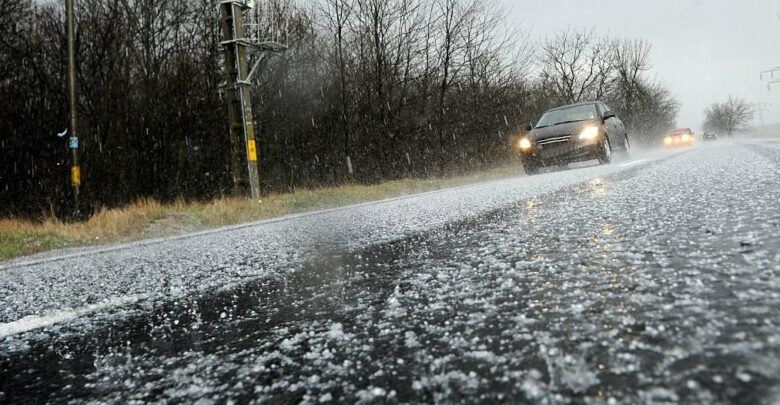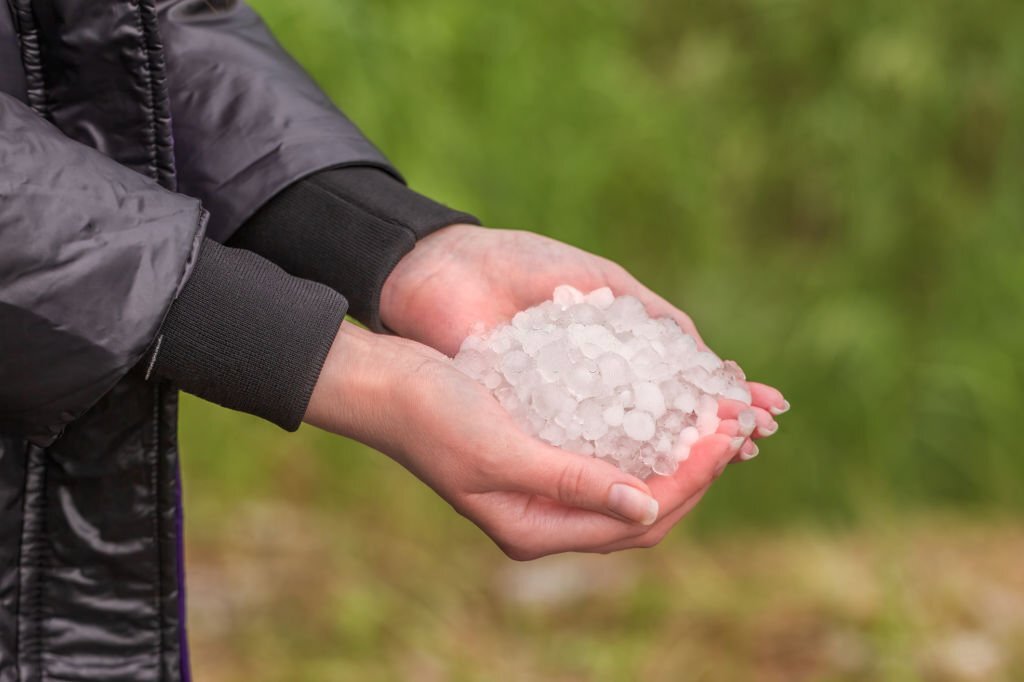Weather
Hailstorm – Definition

A hailstorm is a meteorological event in which balls or pieces of ice, known as hailstones, fall from the sky during a thunderstorm. Hailstones can range in size from small pea-sized pellets to large balls of ice measuring several inches in diameter. Hailstorms can cause significant damage to crops, vehicles, and structures, and can also pose a threat to people caught outdoors during the storm.
Accidents caused by hailstorms
 Hailstorms can cause a variety of accidents and incidents due to the dangerous and unpredictable nature of falling ice. Some examples of accidents caused by hailstorms include:
Hailstorms can cause a variety of accidents and incidents due to the dangerous and unpredictable nature of falling ice. Some examples of accidents caused by hailstorms include:
- Vehicle damage: Hailstones can cause significant damage to cars, trucks, and other vehicles, breaking windows, denting hoods, and causing other types of damage.
- Property damage: Hailstones can also damage homes, buildings, and other structures, causing damage to roofs, siding, and windows.
- Injury: People caught outdoors during a hailstorm can be injured by the falling ice, which can range in size from small pea-sized pellets to large balls of ice measuring several inches in diameter.
- Flight disruptions: Hailstones can also pose a threat to aircraft, potentially causing damage to the planes and disrupting flights.
These are just a few examples of the types of accidents and incidents that can be caused by hailstorms. It is important to take precautions and seek shelter during a hailstorm to stay safe and minimize damage.
Facts you should know about hailstorms

Here are some fast facts about hailstorms:
- Hailstones are formed when strong updrafts in thunderstorms carry water droplets high into the atmosphere where they freeze.
- The size of hailstones can range from small pea-sized pellets to large balls of ice measuring several inches in diameter.
- Hailstones can reach speeds of over 100 mph as they fall to the ground.
- Hailstones can cause significant damage to crops, vehicles, and structures.
- Hailstorms are most common in the spring and summer months, in regions with strong thunderstorm activity.
- Some areas, such as the Great Plains of the United States, are more prone to hailstorms due to their geography and climate.
- Hailstones can be as small as a pea or as large as a softball and can cause injury to people caught outside during a hailstorm.
- Hailstones can also pose a threat to aircraft, potentially causing damage to planes and disrupting flights.
- There are various safety precautions that can be taken to minimize the impact of hailstorms, such as seeking shelter indoors and protecting property with hail-resistant materials.
Hailstorm in movies

Hailstorms have been depicted in various movies, often serving as a dramatic backdrop for the film’s action or plot. Here are a few examples:
- “Twister” (1996) – This disaster film focuses on a team of storm chasers who track tornadoes and hailstorms in the Great Plains of the United States.
- “The Day After Tomorrow” (2004) – This science-fiction disaster film depicts a catastrophic hailstorm that occurs as a result of global warming and climate change.
- “Into the Storm” (2014) – This disaster film focuses on a group of storm chasers who document a series of intense and deadly hailstorms.
- “The Natural” (1984) – This sports drama features a climactic scene in which a hailstorm interrupts a crucial baseball game.
- “Deep Impact” (1998) – This science-fiction disaster film depicts a hailstorm caused by the impact of a comet on Earth.
These are just a few examples of movies that feature hailstorms. Hailstorms have long been a source of fascination and inspiration for filmmakers, due to their dramatic and unpredictable nature.
